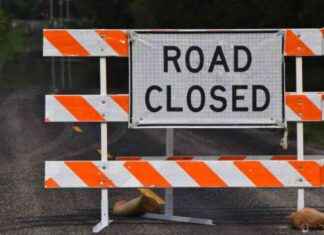This raised hopes that authorities will end the three-week-old protest against COVID-19.
Authorities said that at least 100 people were arrested on mischief charges and that nearly two dozen vehicles were towed. This included all those who blocked one of the major streets. Steve Bell, interim Ottawa Police Chief, said that one officer sustained minor injuries, but no other protestors were injured.
He stated that police “continue to push ahead to take control over our streets,” and added: “We will continue to work day-and-night until this is complete.”
Four protest leaders were among those who were arrested. One was released on bail, while the other three were still in jail.
The crackdown against the Freedom Convoy self-described began in the morning. Hundreds of police officers, some in riot gear, and some with automatic weapons, entered the protest area and began leading demonstrators in handcuffs along the snowy streets, while holdout truckers honked their horns.
Police escorted tow truck drivers wearing neon-green ski masks and with decals from their companies taped on their trucks to hide their identities. They began removing hundreds of large rigs and campers parked shoulder-to–shoulder near Parliament. Before hauling it away, police broke through at least one RV-camper’s door.
Some places saw scuffles, and police were repeatedly seen going nose-to-nose in the face of protesters. They pushed back the crowd amid shouts of freedom and singing the national anthem “O Canada.” Later, police riding on horses were used for some time to disperse the crowd.
Late in the afternoon, police said that protesters attacked officers and attempted to take their guns. They began to dismantle equipment on a stage where they’d been playing music for several weeks.
Protesters held firm in the face one of Canada’s largest police enforcement actions, which saw officers from all over the country.
Montreal trucker Kevin Homaund said, “Freedom wasn’t ever free.” “So what if they handcuff us and put us in jail?”
However, a steady stream of trucks started leaving Parliament Hill in afternoon.
Doug Ford, Ontario Premier, stated that there are signs we are beginning to see progress.
Police refused to disclose the number of protesters and vehicles still in downtown. There were indications that police would continue to work into the weekend in order to clear the area.
After weeks of protests and blockingades that closed border crossings to the U.S., the capital and its paralyzed streets were the movement’s last stronghold. It was also the site of one of the most difficult tests for Prime Minister Justin Trudeau. Some blame America’s influence, while others criticized Canada’s civility.
Fears of violence had led to authorities reluctance to act against protestors. Some of the armed veterans and right-wing extremists who took part in the demonstrations were also present.
The government and police were facing allegations that they allowed the protests to get out of control. Trudeau invoked Canada’s Emergencies Act on Monday. This gave law enforcement unprecedented authority to declare the blockades illegal and tow away trucks.
Two key protest leaders were arrested by Ottawa police as they made their first attempt to end the occupation on Thursday night. To stop outsiders from helping the protesters, they also closed off large swathes of downtown.
This emergency law allowed law enforcement officials to force tow truck companies into helping. Ottawa police stated earlier that they could not find drivers who would help due to their sympathies with the movement, or fear of retaliation.
Pat King, one the protest leaders, said to truckers that they should “please stay peaceful” as police tried to end the siege. He also threatened the livelihoods and safety of tow truck drivers.
King posted on Facebook: “You are committed to career suicide.” “We know exactly where the trucks came.”
Officers surrounded King in his car and later arrested him.
Ottawa police made it clear that they were ready to retake the streets for several days. Even as the operation was in progress, Ottawa police issued another round via loudspeaker and social media warnings to protestors, giving them one more chance of fleeing and avoiding arrest.
Instead of forming a line to push them back, some officers locked arms with the others.
Dan Holland, a London Ontario protester, packed his car and fled as the police closed in. He said, “I don’t want to be beat up by these police.”
Children stood among the crowd, bundled in hats and coats. Police claimed that the children were being pushed into the middle of the altercation by the protesters.
The Freedom Convoy protests were initially focused on Canada’s requirement that truckers enter the country with a vaccine, but quickly morphed into a wide-ranging attack on COVID-19 precautions as well as Trudeau’s government.
Ottawa residents complained about being intimidated and harassed by truckers. They obtained a court order to stop their incessant honking.
Trudeau described the protesters in a “fringe” manner. Canadians have generally accepted the COVID-19 regulations, with almost all of them vaccinated. This includes an estimated 90% Canadian truckers. Some of the mandates for vaccines and masks that were imposed by the provincial governments are rapidly falling away.
The largest border blockade was at the Ambassador Bridge, Windsor, Ontario and Detroit. It stopped the flow of parts between the two countries, and forced the industry into a halt in production. After dozens of protesters were arrested, authorities lifted the siege.
On Wednesday, the final border blockade in Manitoba was lifted across the border to North Dakota.
The protests were cheered and was given donations by conservatives in the U.S.






